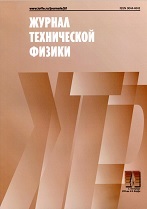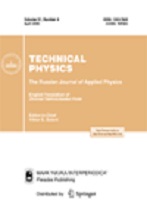|
Photonics
Investigation of the characteristics of the InGaAs/InAlGaAs superlattice for 1300 nm range vertical-cavity surface emitting lasers
S. A. Blokhina, A. V. Babichevb, A. G. Gladyshevb, L. Ya. Karachinskyabc, I. I. Novikovabc, A. A. Blokhina, M. A. Bobrova, N. A. Maleeva, A. G. Kuz'menkovd, A. M. Nadtochiye, V. N. Nevedomskiyf, V. V. Andryushkinb, S. S. Rochasb, D. V. Denisovg, K. O. Voropaevh, I. O. Zhumaevah, V. M. Ustinovd, A. Yu. Egorovc, V. E. Bugrovb
a Ioffe Institute, St. Petersburg
b St. Petersburg National Research University of Information Technologies, Mechanics and Optics
c Connector Optics LLC, St. Petersburg
d Submicron Heterostructures for Microelectronics Research and Engineering Center, Russian Academy of Sciences, St. Petersburg
e National Research University "Higher School of Economics", St. Petersburg Branch
f Center for Collective Use "Materials Science and Diagnostics in Advanced Technologies", St. Petersburg
g Saint Petersburg Electrotechnical University "LETI"
h JSC OKB-Planeta, Velikii Novgorod
Abstract:
X-ray structural analysis and photoluminescence spectroscopy techniques were used to study heterostructures based on InGaAs/InAlGaAs superlattice for active regions of 1300 nm range lasers grown by molecular beam epitaxy. It is shown that the grown heterostructures have a high crystal quality. The perpendicular lattice mismatch of the average crystal lattice constant of the InGaAs/InAlGaAs superlattice with respect to the crystal lattice constant of the InP substrate is estimated at $\sim$+0.01%. An analysis of the photoluminescence spectra made it possible to conclude that the contribution of Auger recombination is insignificant in the studied range of excitation power density. Studies of vertical-cavity surface-emitting lasers with an active region based on the InGaAs/InAlGaAs superlattice made it possible to estimate the gain coefficient at a level of 650 cm$^{-1}$ for the standard logarithmic approximation of the dependence of the gain on the current density. The transparency current density of the laser was $\sim$150 А/cm$^2$, which is comparable to the record low values for the case of highly strained InGaAs–GaAs and InGaAsN–GaAs quantum wells in the spectral ranges of 1200 nm and 1300 nm, respectively.
Keywords:
superlattice, vertical-cavity surface emitting laser, optical gain.
Received: 19.08.2021
Revised: 02.09.2021
Accepted: 03.09.2021
Citation:
S. A. Blokhin, A. V. Babichev, A. G. Gladyshev, L. Ya. Karachinsky, I. I. Novikov, A. A. Blokhin, M. A. Bobrov, N. A. Maleev, A. G. Kuz'menkov, A. M. Nadtochiy, V. N. Nevedomskiy, V. V. Andryushkin, S. S. Rochas, D. V. Denisov, K. O. Voropaev, I. O. Zhumaeva, V. M. Ustinov, A. Yu. Egorov, V. E. Bugrov, “Investigation of the characteristics of the InGaAs/InAlGaAs superlattice for 1300 nm range vertical-cavity surface emitting lasers”, Zhurnal Tekhnicheskoi Fiziki, 91:12 (2021), 2008–2017
Linking options:
https://www.mathnet.ru/eng/jtf4847 https://www.mathnet.ru/eng/jtf/v91/i12/p2008
|


| Statistics & downloads: |
| Abstract page: | 155 | | Full-text PDF : | 72 |
|



 Contact us:
Contact us: Terms of Use
Terms of Use
 Registration to the website
Registration to the website Logotypes
Logotypes